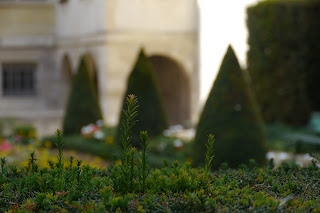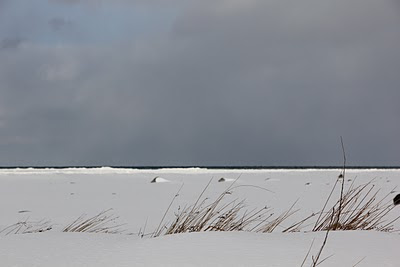 |
| photo of Lacoste by Adrian Gaut |
In the middle of the french countryside, little more than an hour's drive from the Mediterranean coast, lie numerous, ancient hilltowns. Lacoste, perhaps the smallest of these, remained largely untouched for ages until fashion designer, Pierre Cardin, recently decided to invest 30 million euros into purchasing and restoring many of its buildings - including the château of the notorious Marquis de Sade. The locals are not happy.
TONY PERROTTET writes in the WSJ article (link below):
"Since his arrival in Lacoste in 2001, Pierre Cardin has done his best to convert this outpost 25 miles east of Avignon into a "Saint-Tropez of culture," opening gallery spaces, a cafe-restaurant, a grocery store and an array of renovated guesthouses and apartments that will begin taking guests this summer. The cornerstone of his vision is the annual Lacoste Festival, held every July in memory of the Marquis de Sade, who was himself a maverick of the arts.
Not everyone in Lacoste has been thrilled by Cardin's new vision. His accelerating real-estate grab raised the ire of the left-leaning villagers, who had a Communist mayor for five decades after World War II. They vocally objected that his many acquisitions—Cardin often bought houses at up to triple market rate, even when they were in decay or ruins—were depopulating the village and stripping its rustic Provençal character. Accusing him of behaving like an arrogant feudal seigneur along the lines of Sade himself, many locals boycotted his cafe, boulangerie and souvenir store, all to the delight of visiting French newspaper and television reporters."
Read more about this story on the clash of culture and viewpoint: http://online.wsj.com/article/SB10001424052702304186404576388143793160396.html#ixzz1RL66nhtN
Progress or ruin? - We'd love to hear your comments!


















 These are a few photos from a recent expedition around Leelanau County, in northern Michigan. It's sort of funny to see this part of the country in mid-March, because it is neither the sunkissed summer season when harassed Detroiters flock northward by the thousands, nor the picturesque white Christmas season. It's the way a resort town looks in the sort of in-between times. It's like catching a glimpse of the fairgrounds after all the tents have been taken down, the horses have gone home, and all that's left of the ferris wheel is a twisted shard of iron. There's a sort of forlorn beauty in this abandonment, which isn't really loneliness but a kind of hibernating expectation. The photograph at the top is actually the Leland township jail - kind of what would happen if Edward Hopper designed Martha Stewart's incarceration. The second photo is the Lake Michigan shoreline - usually dotted with parasols and kids playing frisbee, but looking in this shot like the North Sea.
These are a few photos from a recent expedition around Leelanau County, in northern Michigan. It's sort of funny to see this part of the country in mid-March, because it is neither the sunkissed summer season when harassed Detroiters flock northward by the thousands, nor the picturesque white Christmas season. It's the way a resort town looks in the sort of in-between times. It's like catching a glimpse of the fairgrounds after all the tents have been taken down, the horses have gone home, and all that's left of the ferris wheel is a twisted shard of iron. There's a sort of forlorn beauty in this abandonment, which isn't really loneliness but a kind of hibernating expectation. The photograph at the top is actually the Leland township jail - kind of what would happen if Edward Hopper designed Martha Stewart's incarceration. The second photo is the Lake Michigan shoreline - usually dotted with parasols and kids playing frisbee, but looking in this shot like the North Sea.

